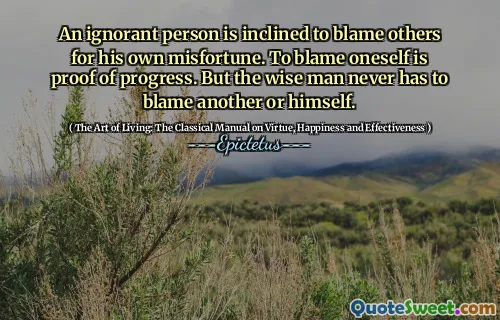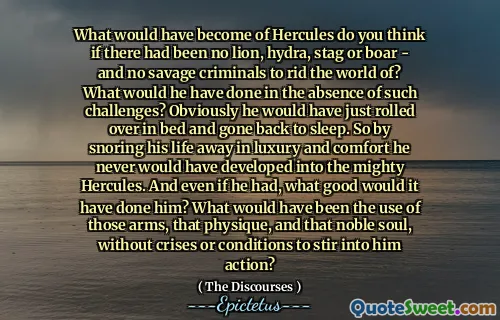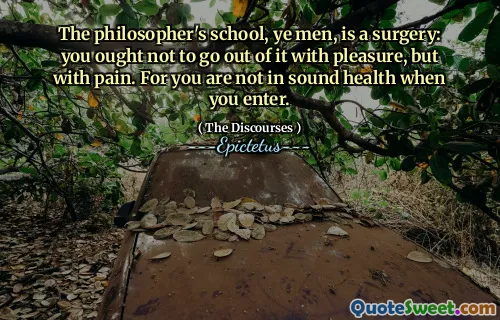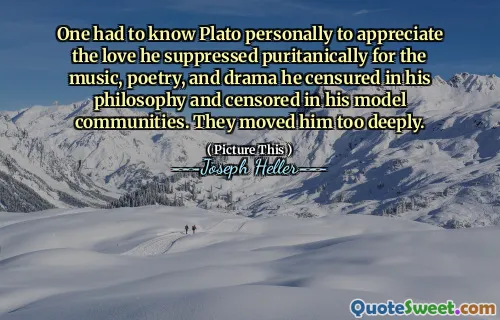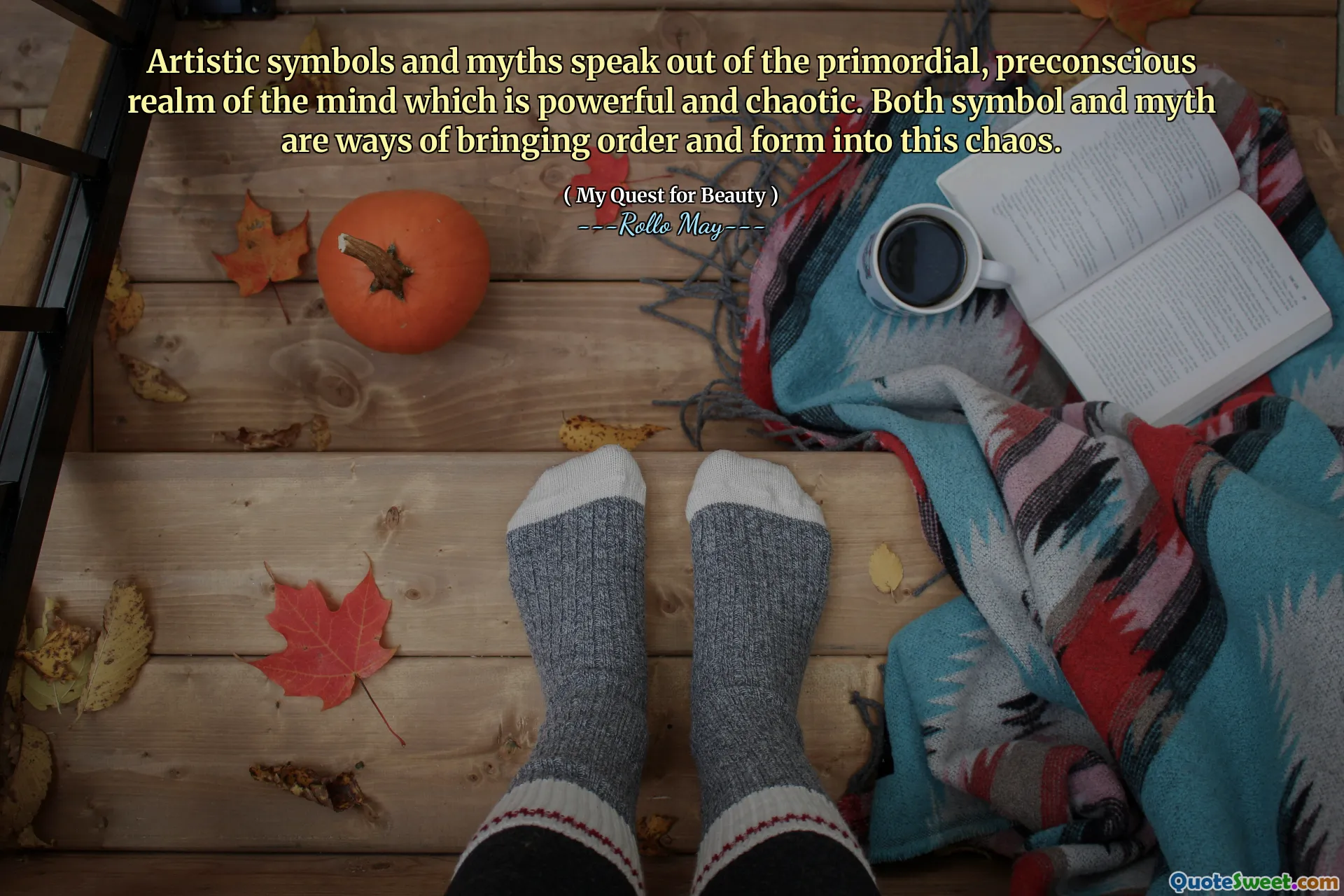
Artistic symbols and myths speak out of the primordial, preconscious realm of the mind which is powerful and chaotic. Both symbol and myth are ways of bringing order and form into this chaos.
This quote beautifully encapsulates the enigmatic relationship between the unconscious mind and artistic expression. It suggests that art—through symbols and myths—draws its power and resonance from the deepest layers of human consciousness, where raw, unstructured emotions and ideas reside. These primordial realms of the mind are not easily accessible or understandable, yet they hold immense creative potential. Symbols and myths act as bridges, transforming this chaotic and formless mental energy into structures that we can comprehend and relate to.
The description of the mind's primordial layer as "powerful and chaotic" resonates with the idea that our inner worlds are often tumultuous and unpredictable, yet brimming with meaning that we haven’t fully articulated. In this context, symbols are not just arbitrary signs; they are the distilled essence of this chaotic subconscious, carrying complex meanings that speak directly to our emotional and spiritual selves. Myths serve as narrative frameworks that give shape to these symbols, allowing us to make sense of fundamental human experiences across cultures and time.
What is compelling about May’s perspective is the emphasis on creativity as an act of order-making rather than mere expression. Artistic symbolism and mythmaking are portrayed not just as creative outlets, but as essential tools for navigating and structuring the internal chaos within us. This can foster a deeper appreciation for art as a form of psychological insight and healing, highlighting the transformative power of myths and symbols to bring clarity and purpose. Ultimately, this viewpoint encourages us to engage with artistic work not only aesthetically but also introspectively, exploring the myths and symbols that shape our own inner landscapes.



